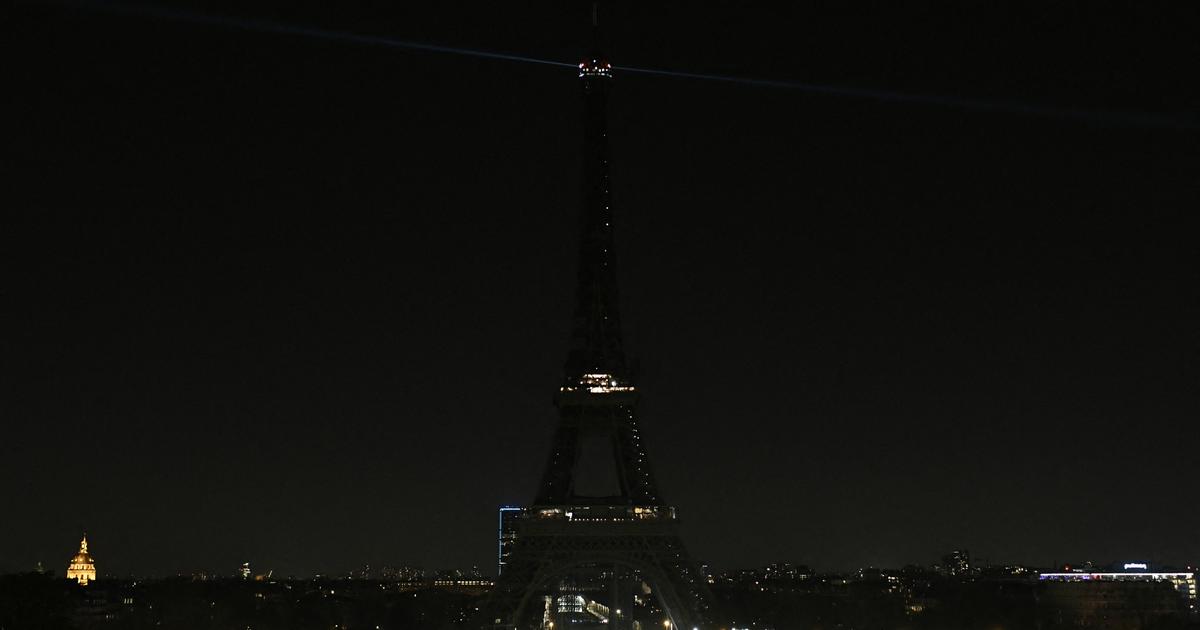The major French cities are stepping up to the energy niche.
In recent days, the town halls of Paris, Marseille and Lille have announced their measures to achieve energy savings, pressed by the explosion in prices and the climate emergency.
The extinction of municipal monuments at night was a preferred option everywhere, or almost.
The Eiffel Tower will thus shed its orange-yellow robe a little earlier than usual, turning off its 336 sodium lamps at 11:45 p.m. rather than at 1 a.m. from September 23.
For the other public buildings in the capital, the shutdown will take place at 10 p.m.
However, the effectiveness of such measures has been called into question in the wake of their announcements.
“Switching off the monuments from 10 p.m. is probably not the most important source of savings
,” said Agnès Pannier-Runacher, Minister for Energy Transition, before launching that
“sobriety, […] this does not is not stopping to receive tourists”
.
Before the minister, the mayor of Nice, Christian Estrosi, blamed in front of the press measures
"gadget in Paris"
, expressly citing
"the extinction of the lighting of the Eiffel Tower"
.
In Nice,
"no sporting or cultural activity will be impacted"
, he announced on this occasion
.
67 MWh saved over the year
On its website, the Société d'exploitation de la Tour Eiffel (SETE) confirms that,
"contrary to popular belief, the nocturnal illumination of the [Eiffel Tower] only represents around 4% of the monument's annual energy bill".
.
A figure confirmed by the operating company to AFP.
Insofar as the overall energy consumption of the monument amounts to approximately 6,700 MWh per year, the night illumination of the Eiffel Tower therefore represents 268 MWh each year, or 0.73 MWh each day.
Read alsoSmart public lighting, which allows communities to save energy, is gaining ground
On average, the Eiffel Tower is lit for 5 hours a day throughout the year, from 8 p.m. to 1 a.m.
Subtracting 1h15 from these five average hours of nocturnal illumination allows us to obtain an estimate of the savings made by switching off the spotlights at 11:45 p.m. rather than at 1 a.m.
About 67 MWh in total, or the annual consumption of 14 French people, according to data provided by EDF.
A “
symbolic gesture
”
As for flickering, which occurs every hour for 5 minutes, SETE considers it to be
“very energy efficient”
too.
The operating company informs that it consumes approximately 8.8 MWh per year, or
"the equivalent of the annual electricity consumption of a 30 m² studio occupied by 2 people"
.
Note that, here too, the measure decided by the town hall of Paris should in principle only remove two flickers – at midnight and 1 a.m. – out of the six that occur each evening.
These modest savings in view of the stakes prompted Jean-François Martins, president of SETE, to describe the decision taken by the Parisian executive as an
“eminently symbolic gesture”
.
It contributes, according to him,
"to the awareness of the energy sobriety that we must demonstrate"
.
SETE tells
Le Figaro
that its teams
“are currently working on the operational implementation of this measure to be ready on the announced date”
, September 23.
Read alsoAt a time of energy sobriety, cultural venues are looking for savings points
In Lille, the lighting of public buildings has already ceased.
The northern city thus intends to save 170 MWh each year, which represents the annual electricity consumption of 57 Lille residents, according to EDF figures.
Same decision in Marseille, where the town hall decides to turn off the 140 monuments benefiting from municipal lighting at 11:30 p.m., then at 10:30 p.m. in winter.
Contacted, the town hall says it does not have exact figures on the savings made by means of this measure.
A “
waste
” that must stop
“
Switching off the lighting in public buildings is a symbol, that is not what will make us pass the peak of electricity consumption
”, says Jacques Percebois, director of the Center for Research in Energy Economics and Law ( Creden).
The professor emeritus of the University of Montpellier points out that public lighting in towns and villages represents only 1% of global electricity consumption.
However, Jacques Percebois welcomes the measure taken in the various major French cities.
"
In any case, lighting the monuments at night is a waste that he is happy to see stopped
," he says.
Not to mention the effect of massification that these symbolic extinctions could cause "
if every Frenchman adopted the same reflex
".
This is reminiscent of the declaration of the mayor of Paris, Anne Hidalgo, for whom the goal of the extinction of public buildings is above all to “
give an example
”.
Since then, the signs of the Champs-Élysées have given him reason by announcing that they too will turn off their windows and screens from 10 p.m.
Still, heating and air conditioning are the main levers in the hands of municipalities to effectively reduce their energy consumption, insists Jacques Percebois.
In fact, reducing the heating temperature in buildings by just one degree saves 7% of energy.








